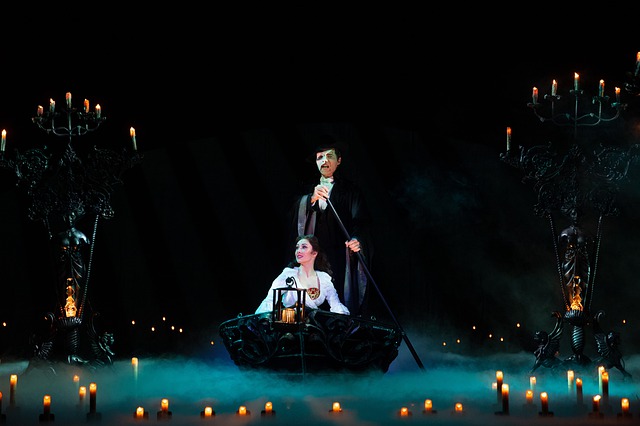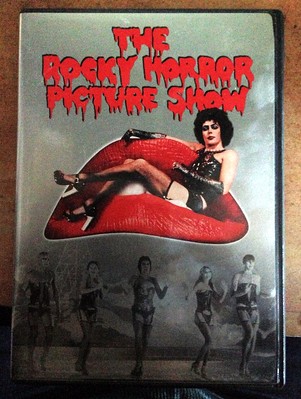Love is one of the most universal emotions that a human can experience. It can also be one of the most bitter emotions. Almost everyone at some point has felt the pain of unrequited love and romantic jealousy. It’s hard to handle rejection and heartbreak with dignity but it’s important not to let heartbreak and romantic obsession define or derail your life or the lives of other people.
In other words, it’s important not to become a yandere. The yandere is an ancient character trope that dates back to ancient Mesopotamia. From ancient myths, literature, TV, movies and countless animes, the yandere is everywhere. This character type is even more enduring and popular than the Byronic Hero. This archetype has existed for so long because it embodies ideas and emotions that are so universally relatable.
Who is a Yandere?
Yandere is a combination of the Japanese words yanderu and deredere. Yanderu means “insane” and deredere means “affectionate”. Combined, yandere refers to someone who is lovesick to the point that they have lost their mind.
These characters are obsessed with their love interest and are often dangerously violent. While the name would appear to be inspired by anime, this is one of the oldest archetypes in storytelling. The yandere archetype dates back to at least ancient Mesopotamia in legends of the goddess Ishtar.
These characters typically appear cute, innocent, and charming at first. But as the book, movie, or series progresses, the character becomes much more sinister, controlling, and abusive.
What makes a male Yandere different than a female one?
Male and female yandere characters are very similar. The primary difference between them is the way that they are perceived. Male yandere characters are more likely to be seen as immediately menacing than female yandere characters.
What is a male Yandere called?
Yandere is a gender neutral term and male yandere characters are simply referred to as male yanderes.
Who are some examples of male Yanderes in fiction?
As one of the oldest character archetypes in fiction, you can find examples of the male yandere in almost any media.
Examples of male Yanderes in anime
Yandere is a combination of two Japanese words, so it’s only natural that there are countless examples of the yandere in anime. Some of the most extreme examples are:
- Black Cat – Creed Diskenth: not a yandere motivated by romantic love, but by a desire to learn from a mentor.
- Kuroko No Basuke – Seijuro Akashi: an athlete who cares a little too much about his teammates.
- Code Geass – Rolo Lamperouge: a more unconventional example of a yandere who is not motivated by traditional notions of love (image below).
- Amnesia – Toma: a yandere who comes to regret his actions.
- Tokyo Ghoul – Shuu Tsukiyama: a yandere chef who uses his culinary skills to entrap his victims.
- Kamigami no Asobi – Balder Hringhorni: a lovesick god who has fallen for a mortal human woman.
- Durara! – Seiji Yagiri: an example of a yandere who is more openly violent than secretly manipulative.
- Black Butler II – Alois Trancy: a teenage example of a violent yandere.
- Diabolik Lovers – Sakamaki Ayato: Sakamaki Ayato is a vampire yandere.
- Mirai Nikki – Yukiteru Amano: Yukiteru Amano is one of the more mild-mannered examples on this list, but that only makes his yandere moments more terrifying.
- Fushi Yuugi – Suboshi: a warrior who is in love with a celestial princess.
- D. Gray Man – Tyki Mikk: Tyki Mikk’s double personality makes him a great yandere example.
- Black Butler – Grell Suteliff: Grell Suteliff is a Grim Reaper-type character who lusts after Sebastian Michaelis.
Examples of Yandere in other media
Male Yandere in Film
- A Nightmare on Elm Street (2010 Remake) – Freddy Krueger
- Batman Forever – The Riddler has shades of this trope in his attitude towards Bruce Wayne
- Blue Steel – Eugene Hunt, a stock broker obsessed with a rookie cop
- F.E.A.R. – David McCall, played by Mark Wahlberg
- You Belong to Me – A Lifetime movie featuring a stalker named Michael McBride who wants his boss
- Bram Stoker’s Dracula – Count Dracula qualifies as this in his pursuit of Mina Harker. This is Francis Ford Coppola’s own interpretation of the story. This plotline and characterization of Count Dracula do not appear in Bram Stoker’s novel.
- The Rocky Horror Picture Show – Dr. Frank N. Furter is one of the best examples of a yandere in his attitude towards Rocky.
- Star Wars – Anakin Skywalker is one of the most extreme examples of a male yandere
Literature
- Chalet School – Jack Lambert
- The Dark Descent of Elizabeth Frankenstein – Fanfiction/re-telling of Mary Shelley’s classic novel portrays Dr. Victor Frankenstein as a yandere in love with his cousin Elizabeth
- In the original novel Frankenstein, Victor Frankenstein also has shades of this trope. The novel is told from Victor’s point of view however, so it’s downplayed.
- Devils & Thieves – Darek
- The Hobbit and The Lord of the Rings trilogy– Gollum acts like this towards an inanimate object, the One Ring.
- The Hunchback of Notre Dame – Claude Frollo
- The Phantom of the Opera – Erik, the titular Phantom of the Opera
- Wuthering Heights – Heathcliff. The entire novel is based around his volatile obsession with Catherine.
- Paradise Lost – One interpretation of the story is that Lucifer is the greatest yandere of all time. His rebellion against God is a reaction to God loving humanity more than him.

Why is the male Yandere Archetype Controversial?
It should go without saying that the male yandere, and yanderes in general, have the potential to be a very problematic character depending on how the creator portrays them. Nearly every example of a yandere in fiction is somewhat of a toxic character. At best these characters tend to have an unhealthy attachment to their love interest.
More often however, the yandere characters are emotionally and/or physically abusive to their love interest and the people around them. Sometimes their behavior goes past simple abuse and becomes criminally violent. Many yanderes are killers.
This obviously has the potential to be problematic. The controversy surrounding these characters usually depends on how the character’s yandere qualities are portrayed. Some yandere characters are not portrayed negatively. In these cases, the author doesn’t see the abusive elements of the character as problematic, or they actively see these as positive traits. These characters usually become heavily criticized for glamorizing and romanticizing abuse and domestic violence.
Some creators are more self-aware and create yandere characters who are clearly villainous. These characters may simply be meant to be scary villains or the creator could be using the character for commentary about abuse, romantic obsession, or even mental illness.
Even villainous, negatively portrayed yandere characters can be controversial. These characters can sometimes be perceived as sensationalizing hot button topics such as abuse and mental illness. Some of these characters are yandere because they are legitimately struggling with mental illness and their portrayal can be perceived as insensitive.

